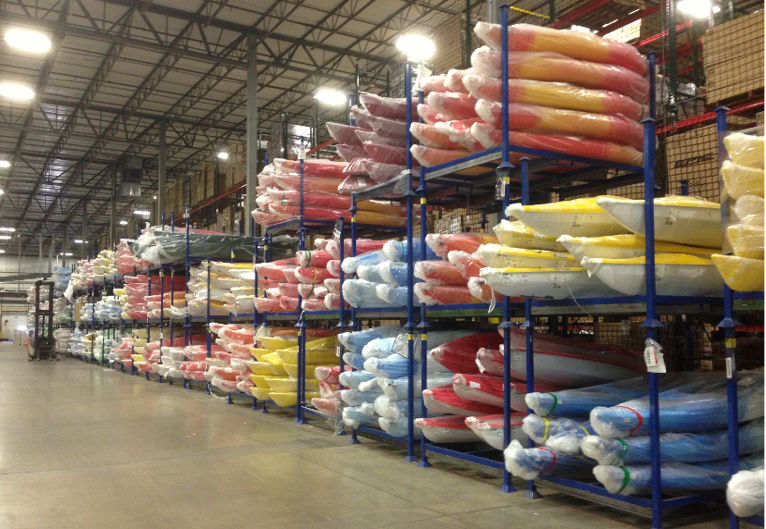Location: Georgia & Missouri
Before
Johnson Stephens Consulting and the Hy-Tek team worked together to assist our client, a leading outdoor sporting goods retailer, and boat manufacturer/wholesaler, with the development and analysis of a complete Supply Chain Strategic Road Map. The study consisted of reviewing the 5 – 7 year capacity requirements of the network (incorporating planned business growth) versus the capabilities of the current network of distribution and fulfillment centers. The client operates two distribution centers, Macon, GA; and Springfield, MO. The facilities operated with MHE technology consisting of limited conveyor systems, pallet storage rack, and wide span shelving.
Results
The resulting action plan, while confidential, is providing our client with a step-by-step schedule for logistics and supply chain network changes and improvements as the business plan is executed to address omnichannel distribution and fulfillment. Johnson Stephens Consulting proceeded with the planning and design, working with the Hy-Tek systems team on implementation of MHE systems improvements in the Macon, GA (to incorporate eCommerce fulfillment, in addition to distribution to stores) and Springfield, MO distribution centers, working closely with the client’s supply chain management team.
How We Did It
The alternatives considered internal and external expansion of distribution centers, new facilities, and transportation mode changes. The JSC and Systems team performed transportation optimization using state of the art optimization modeling tools, customized space planning models, MHE technology assessments, financial modeling, and conceptual MHE systems block planning in AutoCAD. The analysis and modeling included inbound freight, distribution center direct and indirect expenses, and occupancy expenses. Models were constructed to provide easy input and “what-if” analysis for the client to use as business conditions change. All operating scenarios were compared using a net present value approach and after tax internal rate of return analysis methods. Examination of subjective, non-quantitative factors was also taken into consideration using a quantitative scoring matrix exercise to incorporate required service levels to customers and stores.





